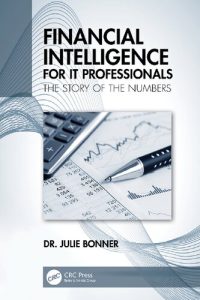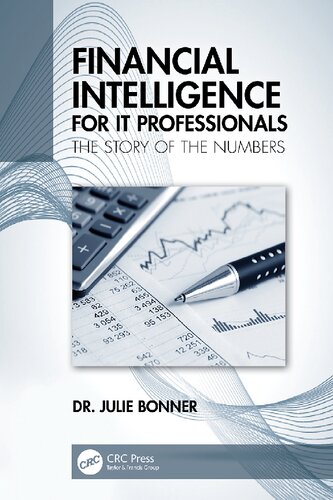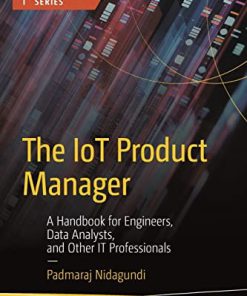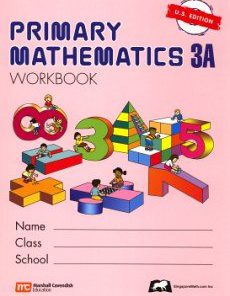Financial Intelligence for IT Professionals: The Story of the Numbers 1st Edition by Bonner 9781000487374 1000487377
$50.00 Original price was: $50.00.$25.00Current price is: $25.00.
Financial Intelligence for IT Professionals: The Story of the Numbers 1st Edition Bonner – Ebook Instant Download/Delivery ISBN(s): 9780367627485,0367627485,9781000487374, 1000487377

Product details:
- ISBN 10:1000487377
- ISBN 13:9781000487374
- Author: Bonner
Financial Intelligence for IT Professionals
The Story of the Numbers
Table contents:
Part One: Why Being Financially Savvy Matters
Topic 1: How Financial Clarity Gives You Professional Leverage
Do You Know If Your Employer Could Be in Trouble Financially?
Do You Want to Start Your Own Business?
Do You Want to Grow Your Business or Otherwise Invest in Other Businesses?
Do You Desire to Obtain a Managerial, Directorial, or Executive Position?
Topic 2: How Understanding the Numbers Gives You an Edge
The Difference between Finance and Accounting
Utilizing Your Financial Resources Effectively
Break Down Silos
Understanding Financial Decisions and the Connection to Financial Performance
Assess Promotional Opportunities
Topic 3: Why Numbers and Accounting Can Be Confusing
Myth #1: “I Cannot Learn This Subject Because It Is Math-Based”
Myth #2: “I Cannot Learn This Subject Because I Am Not Smart”
Myth #3: “I Cannot Learn This Subject Because It Is BORING!”
The Truth of Why Accounting and Finance Can Be Challenging to Learn
Bottom Line
Topic 4: How the Book Is Arranged for Your Learning Journey
Regarding Readers in Different Countries
Relating Personal Finance to Corporate Finance
What to Watch Out For
Examples
Context
Exercises
How to Learn
Tools for Your Learning
Other Resources
Departmental Learning Groups or Study Groups
Part One: Exercises, Practice, and Resources
Notes
Part Two: Revenue and Expense: The Basics of Income Statements
Translating This Information
Topic 5: Profit and Cash Are NOT the Same
Why Profit and Cash Are Not the Same?
Procurement to Payment Cycle
Order to Cash Cycle
Topic 6: Overview of Profit and Loss Statement
Reporting Periods
Fiscal Years
Periods of Time
Be Aware!
Major Sections of the Profit and Loss Statement
Revenue
Cost of Goods Sold
Gross Margin
Operating Expenses
Operating Income
Net Profit
Topic 7: Breaking Down the Profit and Loss Statement
Revenue Recognition and Timing Issues
Deeper Dive into Cost of Goods Sold
Part Two: What to Watch Out For
Part Two: Exercises, Practice, and Resources
Notes
Part Three: Assets, Liabilities, and Equity: Understanding the Balance Sheet
Periods of Time
Translating This Information
Topic 8: Short Term versus Long Term
Topic 9: Assets
Current Asset: Cash
Current Asset: Accounts Receivable
Current Asset: Inventory
Long-Term Asset: Property, Plant, and Equipment
Depreciation
Amortization
Topic 10: Liabilities
Current Liability: Accounts Payable
Long-Term Liabilities
Topic 11: Equity
Stock
Retained Earnings
Part Three: What to Watch Out For
Part Three: Exercises, Practice, and Resources
Notes
Part Four: Cash Flow Statements
Topic 12: How Profit and Cash Are Related to Financial Statements
Topic 13: Operating, Financing, and Investing Activities
Cash Generated or Used from Operating Activities
Cash Generated or Used from Investing Activities
Cash Generated or Used from Financing Activities
Topic 14: How All Financial Statements Fit Together
Income Statement to Balance Sheet
Revenue to Assets
Expenses to Liabilities
Net Income to Equity
Income Statement to Cash Flow Statement
Balance Sheet to Cash Flow Statement
Topic 15: Working Capital Management
Accounts Receivable
Inventory
Accounts Payable
Part Four: What to Watch Out For
Part Four: Exercises, Practice, and Resources
Notes
Part Five: The Power of Financial Ratios
Topic 16: Profitability Ratios
Gross Profit Margin
Net Profit Margin
Connecting Back to the 10-k
Topic 17: Solvency Ratios
Debt to Assets
Equity to Assets
Debt to Equity
Zoom Results
LogMeIn Results
Connecting Back to the 10-k
More about Developing a “Gut Feel”
Topic 18: Liquidity Ratios
Current Ratio
Quick Ratio
Zoom Results
LogMeIn Results
Connecting Back to the 10-k
Topic 19: Efficiency or Activity Ratios
Inventory Turnover Ratio
Days Sales in Inventory
Accounts Receivable Turnover
Days Sales Outstanding
Accounts Payable Turnover
Days Payable Outstanding
Cash Conversion Cycle
Connecting Back to the 10-k
Ties to Cash Flow and Working Capital Management
Topic 20: Other Financial Formulas of Interest
EBITDA
Free Cash Flow
Horizontal Analysis
Part Five: What to Watch Out For
Part Five: Exercises, Practice, and Resources
Notes
Part Six: Special Topics
Topic 21: Internal Controls
Segregation of Duties
Asset and System Access Controls
Physical Counts of Assets
Cycle Counting
Reconciliations
Approval Authority
Procedures and Audits
Topic 22: Protecting Financial Information in Excel
Problem 1: Accessing File Content
Problem 2: Erasing Content in a Cell
Problem 3: Consistency in Data Entry
Problem 4: Audit and Informational Tabs
Problem 5: Embedded Calculation Factors
Topic 23: Budgeting and Variances
Budgeting
Historical Averages
Trendline Analysis
Cost Drivers
Variance Analysis
Topic 24: Contractor or Full-Time Employee?
Reasons for Contracting Labor
Modeling Analysis
Topic 25: Small Business
Overall Business Resources
Reports
QuickBooks and Software
Financial Data Analysis
Pricing Products and Services
Business Plans
Business versus Personal
Receipts and Documentation
Taxes
Social Security and Medicare
Payroll Taxes
Other Tax Demands
Financial Human Resources
Bookkeeper/Accountant
CPA
CFO
Personal Finance/Wealth Advisor
Bank Reconciliations
Contractor Payments
Funding
Clarity of the Business Model
Do the Numbers Make Sense?
Part Six: Exercises, Practice, and Resources
People also search:
financial intelligence for it professionals
what is financial intelligence
financial intelligence jobs
financial intelligence vs financial literacy
financial intelligence examples
You may also like…
Science Fiction - Fantasy Fiction
Worth It Zeus s Story The Gods Made Me Do It 8 1st Edition Lisa Oliver
Mathematics - Mathematical Theory
The Big Bang of Numbers 1st Edition by Manil Suri ISBN 9781324007036 1324007036
Education Studies & Teaching - Higher & Further Education
Uncategorized
Uncategorized
Forensic Science
Computers - Security












